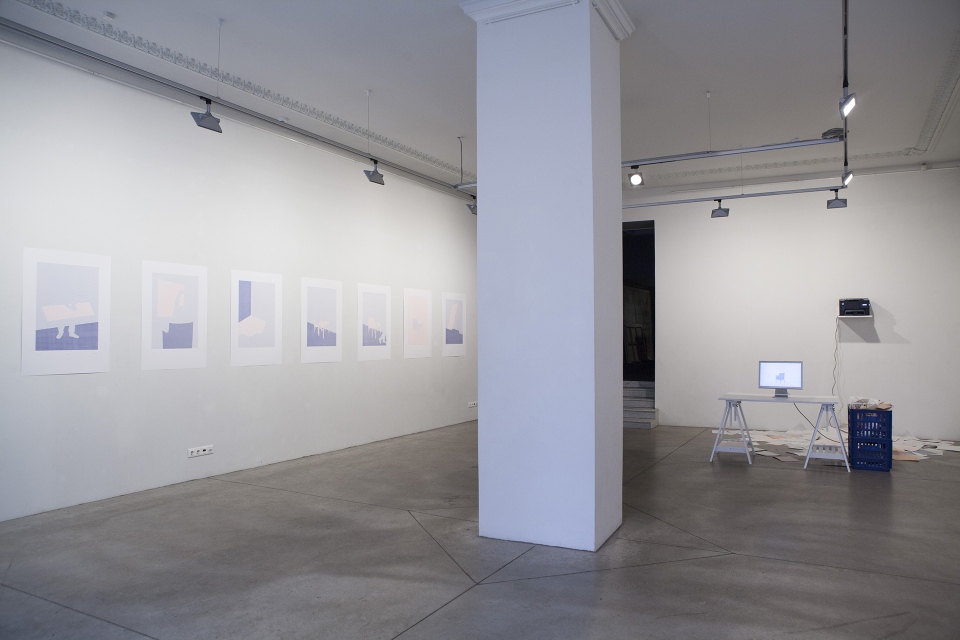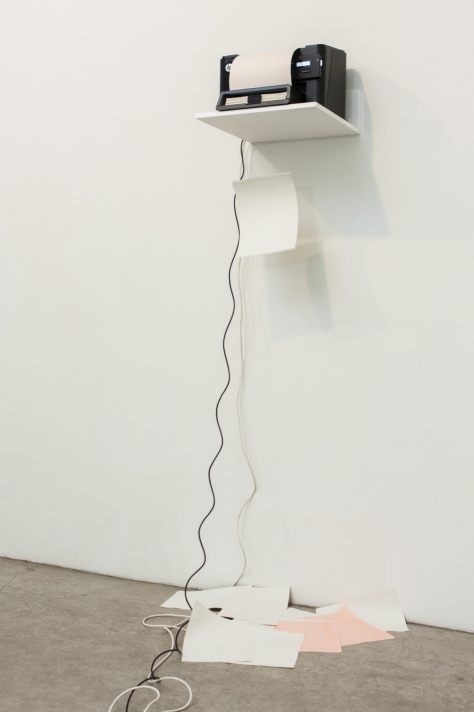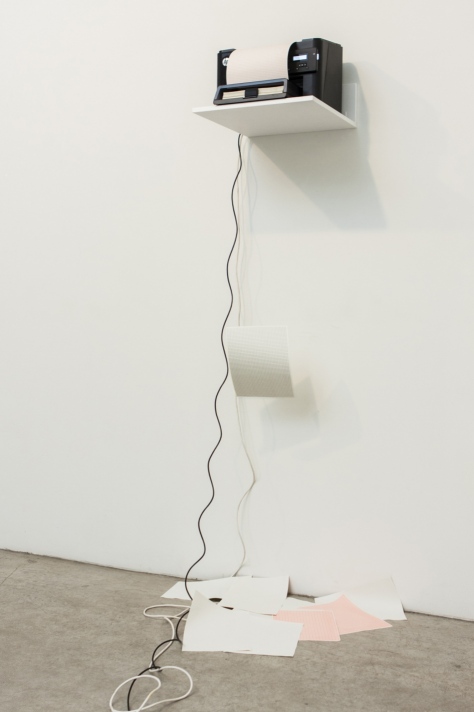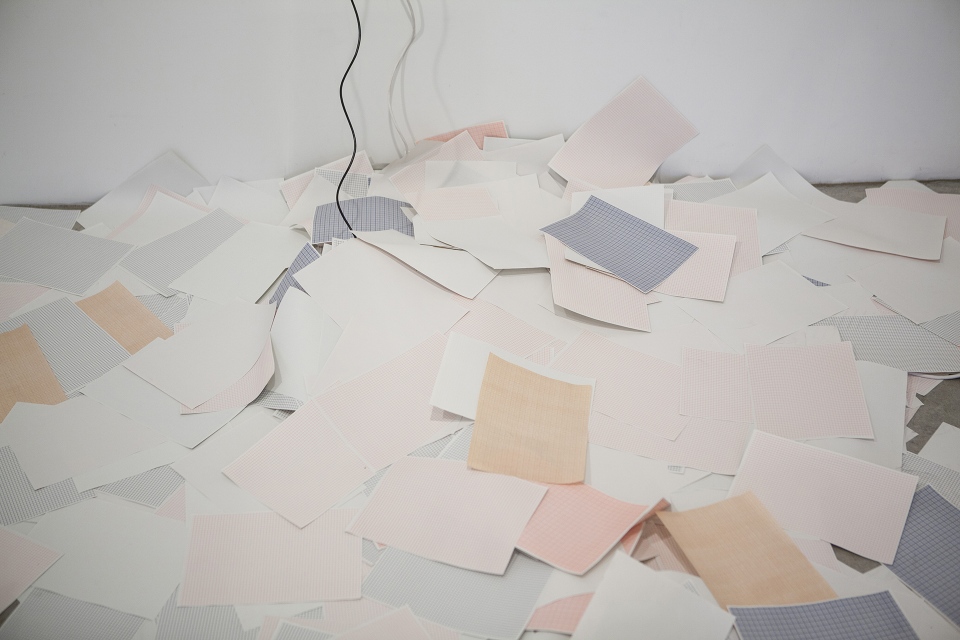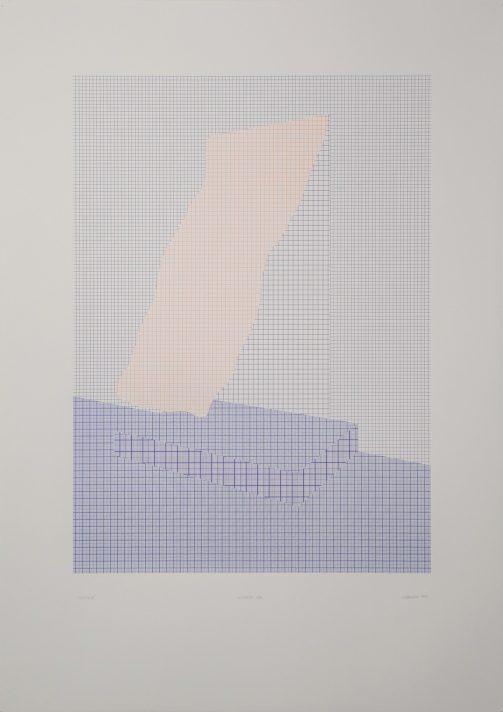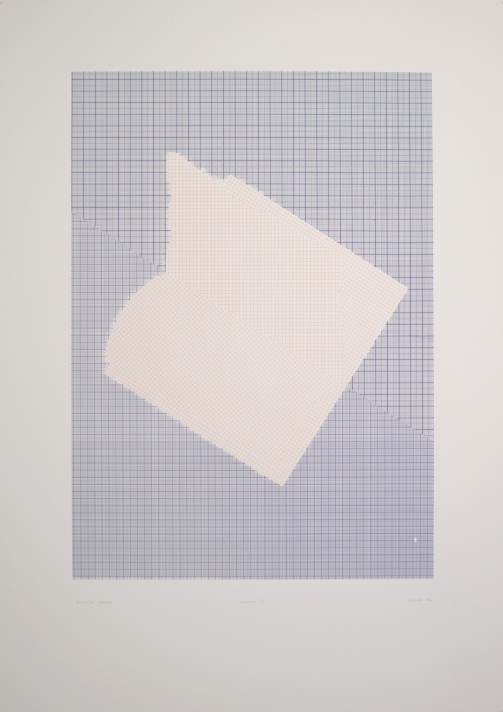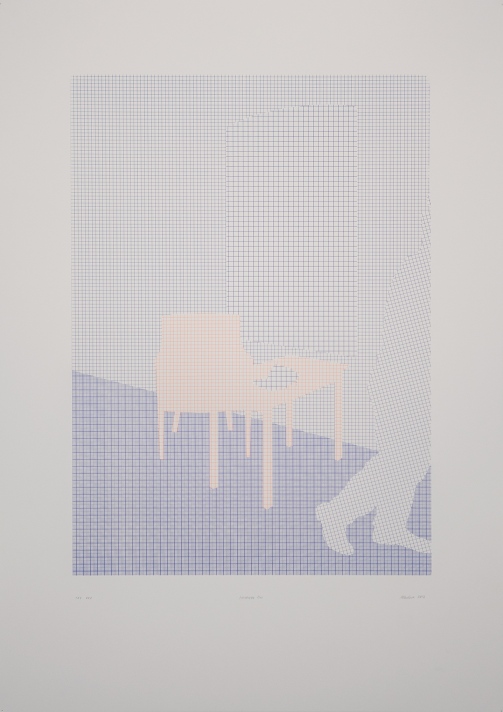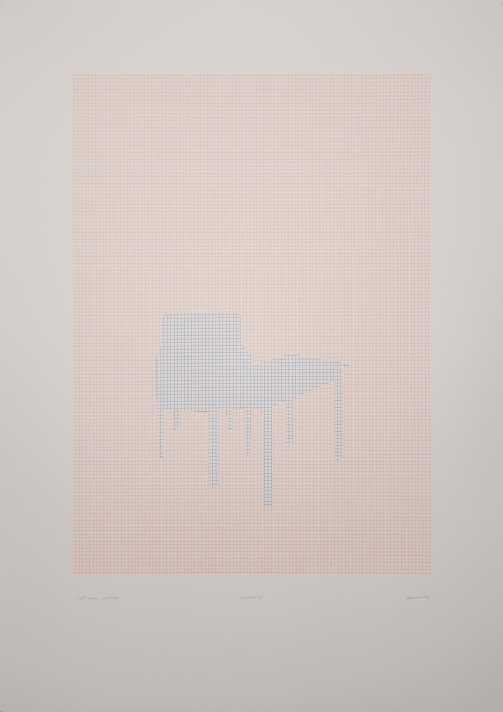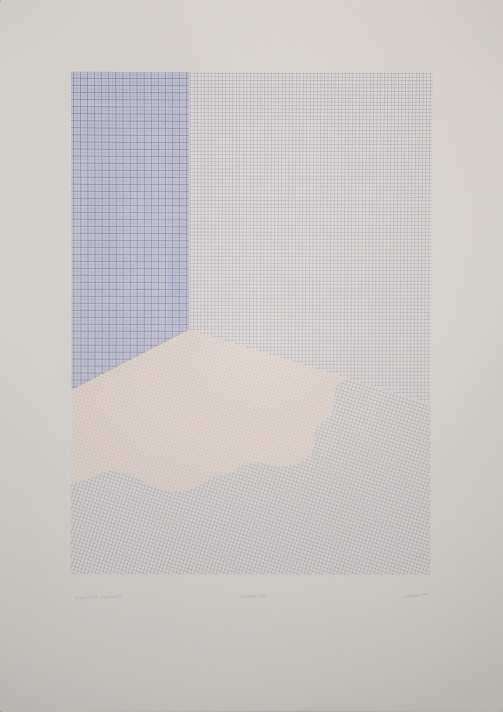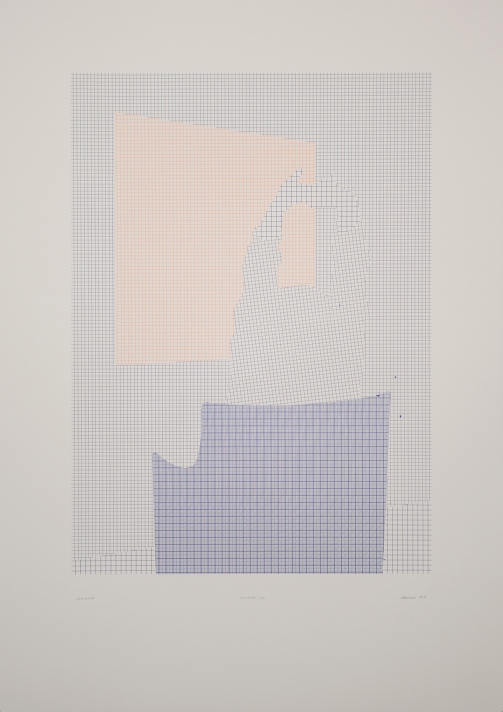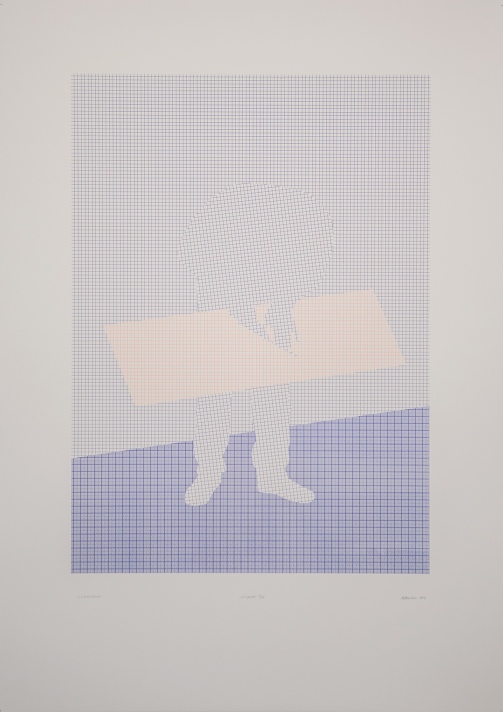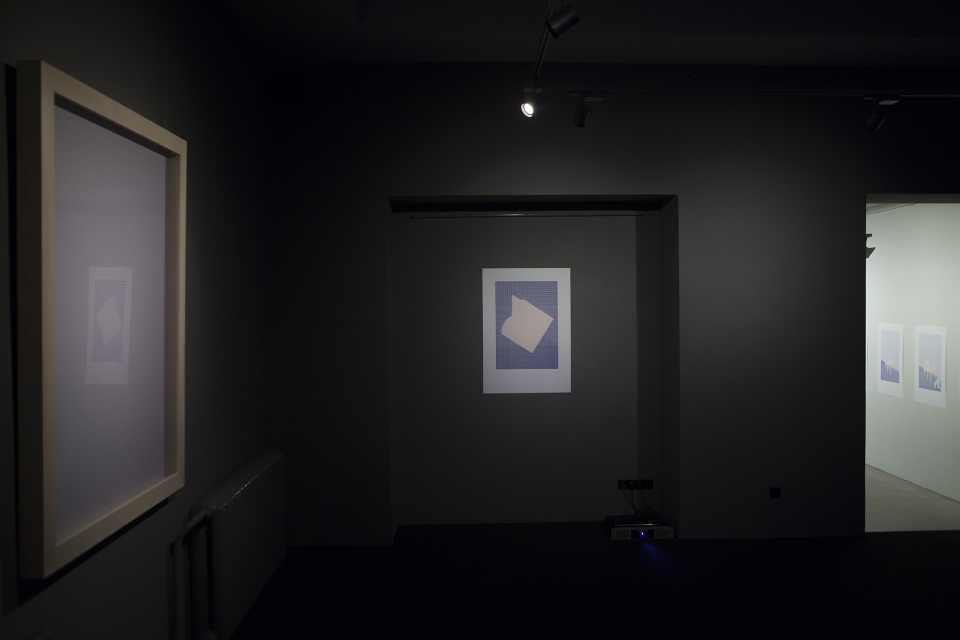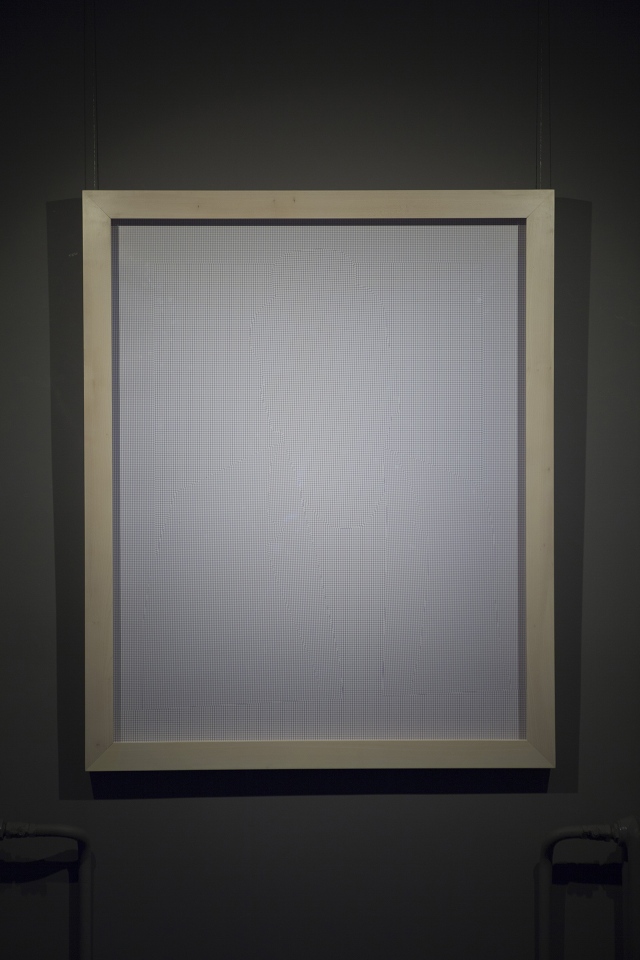"Rūtainā kārtība"
Personālizstāde galerijā Māksla XO Rīgā
29.09.2016.-25.10.2016.
Astoņas sietspiedes uz papīra, 594 x 841 mm; divas digitāldrukas uz papīra; divas animācijas cilpas; dators, skripts, printeris, riso druka uz papīra
Animācija "Darbnīcā" un astoņas grafikas atrodas Latvijas Nacionālā Mākslas muzeja kolekcijā
Galeijā ir nokļuvusi attīrīta, destilēta informācija par “notikumiem”, kas norisinājās manā darbnīcā. Te viss ir diezgan kārtīgs. Bet rūtiņas varēja būt arī līnijas, tas nav tik svarīgi. Elektriķis Voldemārs mums atnesa rulli ar milimetru papīru, kā arī kaudzi ar rūtiņu un līniju kladēm, ko atrada tukšā dzīvoklī. Iedomājās ka mums, māksliniekiem, var noderēt. Noderēja arī.
Izstādes darbiem ir atsevišķi nosaukumi. Nosaukumus var uztvert kā atsēgas vārdus, lai saprastu par ko te iet runa – “Izgatavošana”, “Mērķtiecīga darbošanās”, “Garlaicība”, “Kas notiek”, “Tad kad”. “It kā nekas nenotiek”, “Caurvējš”, “Sadarbība”, “Noslīdēšana”, “Darbnīcā”, “Izdzišana”.
Viena no tēmām ir šķietamā neproduktivitāte. Laiks, kas pavadīts vienkārši domājot, iztēlē risinot vizuālus uzdevumus, kārtojot secību, virzot domu. Ir arī notikusi rosīšanās bez skaidra mērķa, dienas beigās secinot, ka padarītais nekam neder. Taču šāda veida rosīšanās, paļaušanās uz procesu, atļaujot sev kļūdīties, var novest pie rezultāta, kuru nevar izdomāt vai izplānot. Kastes ar atgriezumiem ir šī procesa liecība. Grafikas ir darbnīcā tapušu kolāžu izlases fināla versijas, izpildītas sietspiedes tehnikā. Vienā no darbiem redzama figūra ar sašķiebtu kasti. No kastes uz grīdas birst dažādas ģeometriskas formas – darbnīcā taisīto kolāžu atgriezumi. Saulainās dienās darbnīcas logs un durvis ir atvērtas, staigā caurvējš. Šim attēlam blakus ierāmēta caurvēja veidotā kompozīcija, kuru, izmantojot sev uzliktos krāsas un formas ierobežojumus, pārzīmēju vektorgrafikā. Šos abus attēlus var uzskatīt par manu uz caurvēja kopdarbu.
Printeris ik pēc septiņām minūtēm izmet lapu. Tā plivinādamās nokrīt uz grīdas. Uz lapām redzams kolāžu izejmateriāls – lielākas rūtiņas, mazākas, oranžas, zilas. Printeris turpina caurvēja darāmo. Rutīna un atkārtošanās.
Uz galda stāv datora monitors, kurā redzama animācijas cilpa. Figūra sašļūk, noslīd no tā. Animācija turpina printera un caurvēja darbu, tikai krītošais šoreiz ir noguruma mākts cilvēks. Šis komplekts ar galdu, printeri, kastēm izskatās pēc darba vietas, iespējams, biroja.
Animācija tumšajā telpā ataino manu darbnīcu. Tur notiek darbības, kuru rezultāts ir apskatāms izstādē. Galerijas tumšajā telpā ir darbs, kurā atainots portrets. Šeit ir pievērsta uzmanība figūrai, kas redzama darbībā pārējos izstādes darbos. Tā ir statiska un gandrīz pilnībā saplūdusi ar fonu. Darbos sastopamā grūtība uztvert tēlu rūtiņu raibumā sasitās ar izstādes kopējo ideju – kas ir redzams un saprotams un kas ir nojaušams, bet paliek neredzams?
Un nobeigumā viens izteikums, ko Cicerons piedēvējis Katonam “cilvēks nekad nedara vairāk, kā nedarīdams neko, un nekad nav mazāk viens, kā būdams viens”.
/
"Checkered Order"
Solo Show at gallery Māksla XO Riga
29.09.2016.-25.10.2016.
Eight screen prints on paper, 594 x 841 mm; two digital prints on paper; two animation loops; computer, script, printer, riso print on paper
Animation"In the studio" and eight screen prints are in a collection of Latvian National Museum of Art
Purified, distilled information from the “events” that took place in my studio has reached the gallery. Here, everything is rather orderly. But the checkered pattern could just as easily have been lines; that's not particularly important, though. The electrician Voldemārs brought a roll of graph paper and a batch of squared and ruled notebooks that he had found in an empty apartment. It occurred to him that these might come in handy for us, the artists. And so they did.
The works in the exhibition have individual titles. You can perceive these titles as keywords to understand what the work is all about — “The Making,” “Purposeful Action,” “Boredom,” “What’s Happening,” “Then, When,” “Seemingly Nothing is Happening,” “Draught,” “Co-operation,” “Sliding Down,” “At the Studio,” “Fading.”
One of the themes is apparent "non-productivity". The time spent simply thinking, solving visual conundrums in the mind, sorting sequences, directing thought. But there has also been busy activity prior to this, with no particular purpose; realizing at the end of the day that the result achieved is ultimately pointless. This activity — the reliance on the process, allowing oneself to make mistakes — can lead to results that cannot be anticipated or planned for. Boxes filled with cut-offs are a testament to this process. The screenprints are the final versions of a selection of collages made in the studio. One of the works shows a figure with a lopsided box, from which various geometric shapes are falling onto the floor. These shapes are cut-offs from collages created in the studio. On sunny days, the window and door of the studio are open, and a draught rushes through. A composition created by this draught is framed next to the image. Using restrictions in color and shape that I imposed on myself, I re-draw it in vector graphics. Both images can be seen as the collective work of myself and the draught.
Every seven minutes, the printer spits out a sheet, flapping down to the floor. The pages show the raw material of the collages — large squares, smaller ones, orange and blue. The printer continues the task of the draught. Routine and repetition.
A computer monitor sits on the desk, showing a loop of animation. The figure slumps, sliding down. The animation continues the work of the printer and the through-draught, but now, the one falling is a person overwhelmed by tiredness. This setup, with the table, printer, and boxes, resembles a workplace, perhaps in an office.
The animation in the dark space depicts my studio. This is where the activities take place that result in the work to be scrutinized at the exhibition. The dark room of the gallery hosts a piece that depicts a portrait. What matters here is the shape, which is active in the rest of the exhibition pieces. It is static, nearly entirely fused with the background. The difficulty in perceiving the image amongst the mottled squares seen in the works ties into the overall theme of the exhibition — what can you see, what do you understand, what are you guessing and what stays invisible?
And finally, a statement attributed to Cato by Cicero: “Never does a man do more than when he does nothing, and never is he less alone than when he is all alone.”
